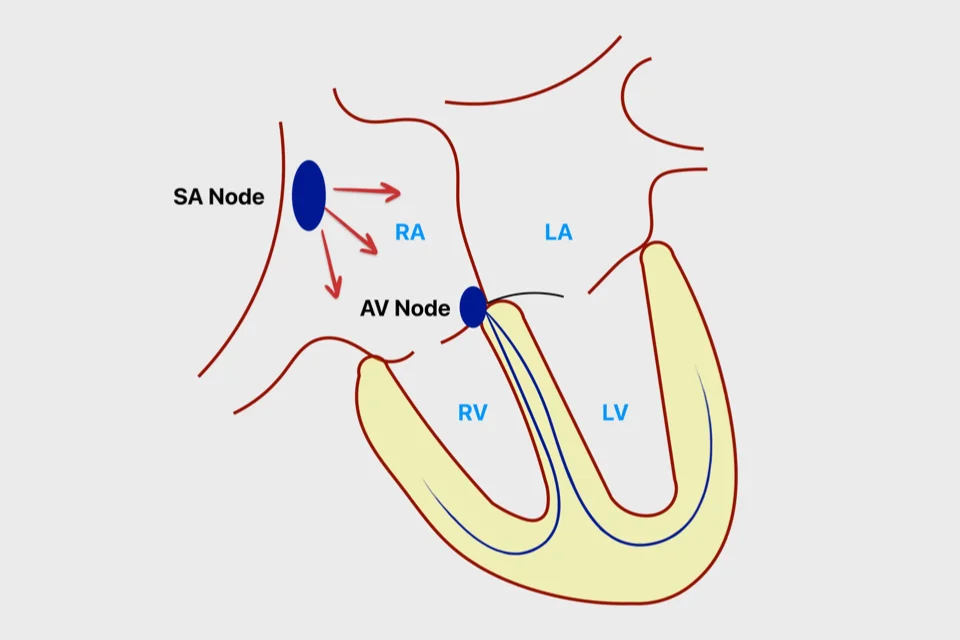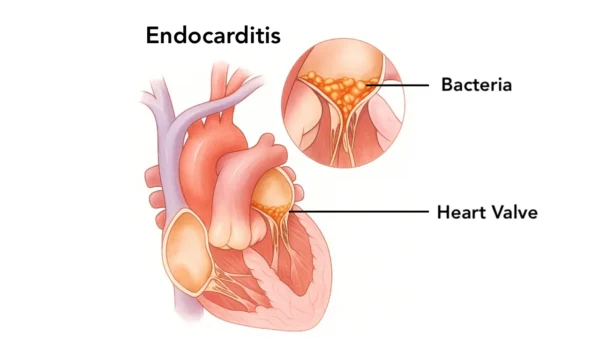LDL cholesterol, short for low-density lipoprotein cholesterol, is often referred to as “bad cholesterol” because of its central role in the development of atherosclerosis and cardiovascular disease. LDL particles transport cholesterol from the liver to tissues throughout the body. When LDL levels are too high, excess cholesterol can accumulate in the walls of arteries, leading to plaque formation.
Elevated LDL cholesterol is one of the strongest and most modifiable risk factors for heart attack, stroke, and peripheral artery disease. For this reason, LDL cholesterol is the primary target of cholesterol-lowering treatment.
- What Does LDL Cholesterol Do in the Body?
- Why High LDL Cholesterol Is Dangerous
- What Is Considered a Healthy LDL Level?
- Causes of Elevated LDL Cholesterol
- Symptoms of High LDL Cholesterol
- How LDL Cholesterol Is Measured
- Treatment Options for High LDL Cholesterol
- Monitoring and Long-Term Management
- In Summary
What Does LDL Cholesterol Do in the Body?
Cholesterol itself is essential for normal cell function, hormone production, and vitamin D synthesis. LDL particles act as carriers, delivering cholesterol from the liver to cells that need it.
Problems arise when LDL cholesterol exceeds the body’s needs. Excess LDL cholesterol penetrates the inner lining of arteries, where it becomes trapped and triggers inflammation. Over time, this process leads to the formation of atherosclerotic plaques.
Why High LDL Cholesterol Is Dangerous
Persistently elevated LDL cholesterol promotes plaque buildup inside arteries, causing them to narrow and stiffen. This reduces blood flow and increases the risk of sudden vessel blockage.
Plaques formed by LDL cholesterol may become unstable and rupture. When this happens, a blood clot can form rapidly and completely block the artery, resulting in a heart attack or stroke.
Importantly, LDL-related damage develops silently over years, often without symptoms until a major cardiovascular event occurs.
What Is Considered a Healthy LDL Level?
LDL cholesterol targets depend on a person’s overall cardiovascular risk.
For individuals without known cardiovascular disease, LDL cholesterol is generally considered optimal when it is below 100 mg/dL.
For people at high or very high risk—such as those with prior heart attack, stroke, diabetes, or multiple risk factors—treatment often aims to reduce LDL cholesterol to around 70 mg/dL or lower.
Lower LDL levels are associated with progressively lower cardiovascular risk.
Causes of Elevated LDL Cholesterol
High LDL cholesterol usually results from a combination of genetic, dietary, and metabolic factors.
Genetics play a major role. Some individuals inherit conditions that impair LDL clearance, leading to very high levels from a young age.
Dietary patterns high in saturated fats, trans fats, and processed foods increase LDL cholesterol production.
Physical inactivity, excess body weight, smoking, and insulin resistance further worsen LDL levels.
Aging also reduces the body’s ability to clear LDL cholesterol efficiently.
Symptoms of High LDL Cholesterol
High LDL cholesterol itself causes no direct symptoms. People often feel completely well, even with dangerously high levels.
Symptoms occur only after LDL cholesterol has caused significant artery disease, such as chest pain from coronary artery disease, leg pain from peripheral artery disease, or neurological symptoms related to stroke.
This silent nature makes routine screening essential.
How LDL Cholesterol Is Measured
LDL cholesterol is measured through a blood test called a lipid panel. It may be calculated or directly measured, depending on triglyceride levels and testing method.
Results are interpreted alongside other risk factors, not in isolation.
Treatment Options for High LDL Cholesterol
Lowering LDL cholesterol is one of the most effective ways to reduce cardiovascular risk.
Lifestyle Measures
Dietary changes are foundational. Reducing saturated and trans fats, limiting processed foods, and emphasizing plant-based foods, whole grains, fish, and healthy fats helps lower LDL cholesterol.
Regular physical activity improves lipid balance and supports weight control. Smoking cessation is critical, as smoking amplifies LDL-related vascular damage.
Lifestyle measures are essential for everyone, even when medications are required.
Medications That Lower LDL Cholesterol
When lifestyle changes are insufficient or cardiovascular risk is elevated, medications are recommended.
Statins are the most commonly used and most studied LDL-lowering drugs. They reduce cholesterol production in the liver and increase LDL removal from the bloodstream, significantly lowering the risk of heart attack and stroke.
Other oral medications may be added to further reduce LDL cholesterol when needed. In patients with very high risk or inherited lipid disorders, advanced injectable therapies may be used to achieve deeper LDL reduction.
Treatment is individualized and often lifelong.
Monitoring and Long-Term Management
LDL cholesterol levels are monitored periodically to assess treatment response and ensure targets are maintained.
Lowering LDL cholesterol stabilizes existing plaques and reduces the likelihood of plaque rupture, which is the main cause of acute cardiovascular events.
In Summary
LDL cholesterol plays a central role in the development of atherosclerosis and cardiovascular disease. Although essential in normal amounts, elevated LDL cholesterol silently damages arteries over time. Regular screening, lifestyle modification, and appropriate medication can dramatically reduce LDL levels and prevent heart attack, stroke, and other serious complications.
You may also like to read these:
Reference: LDL Cholesterol






